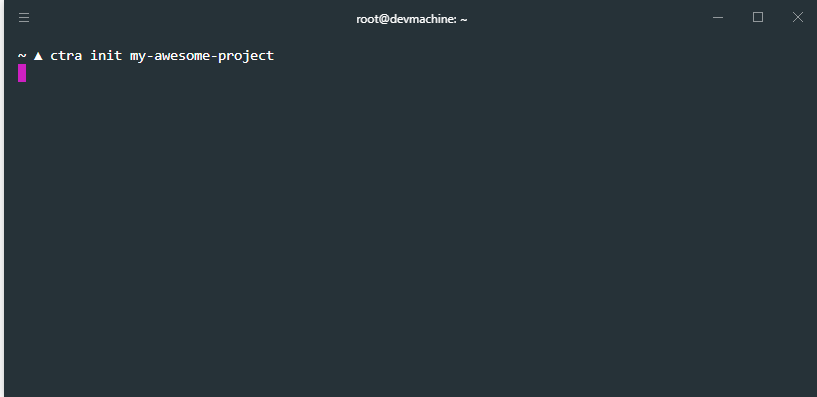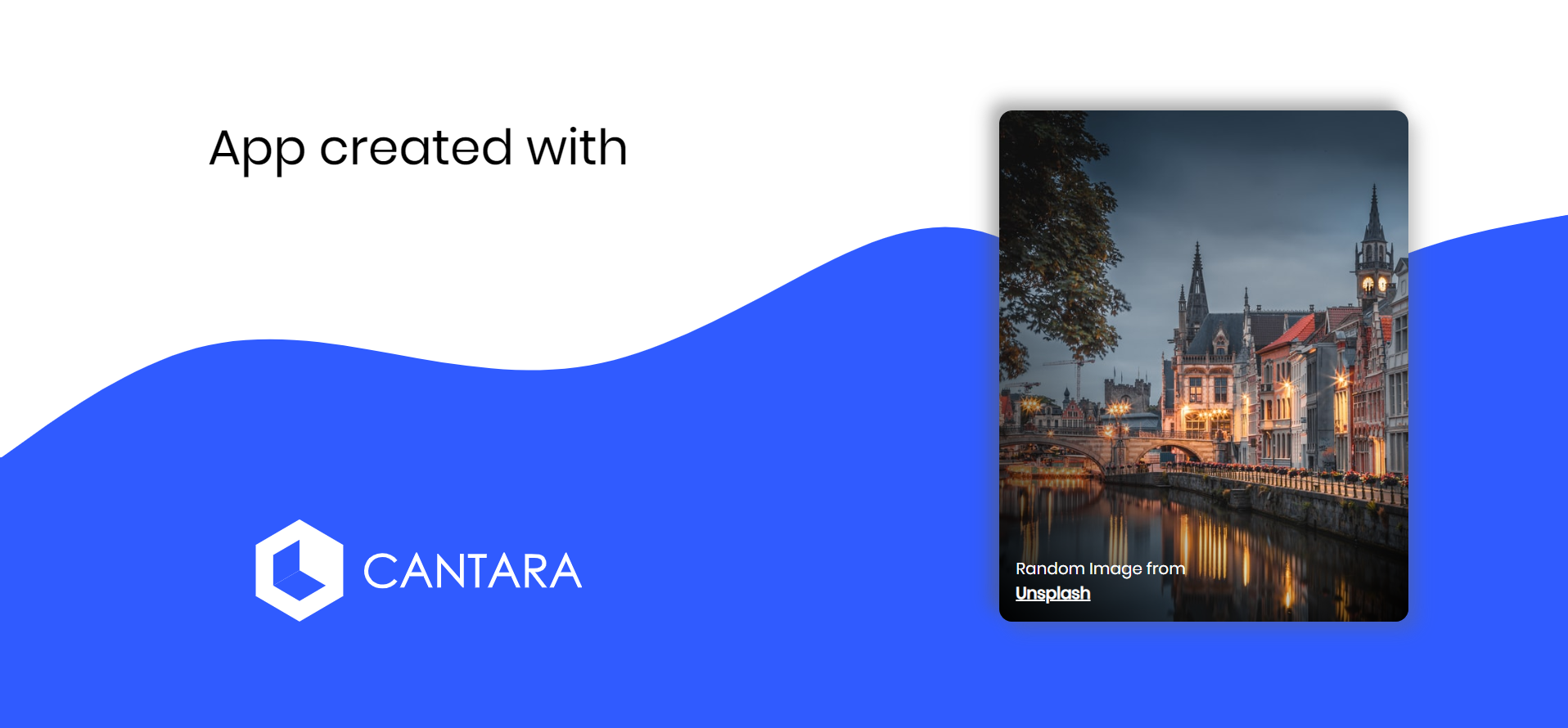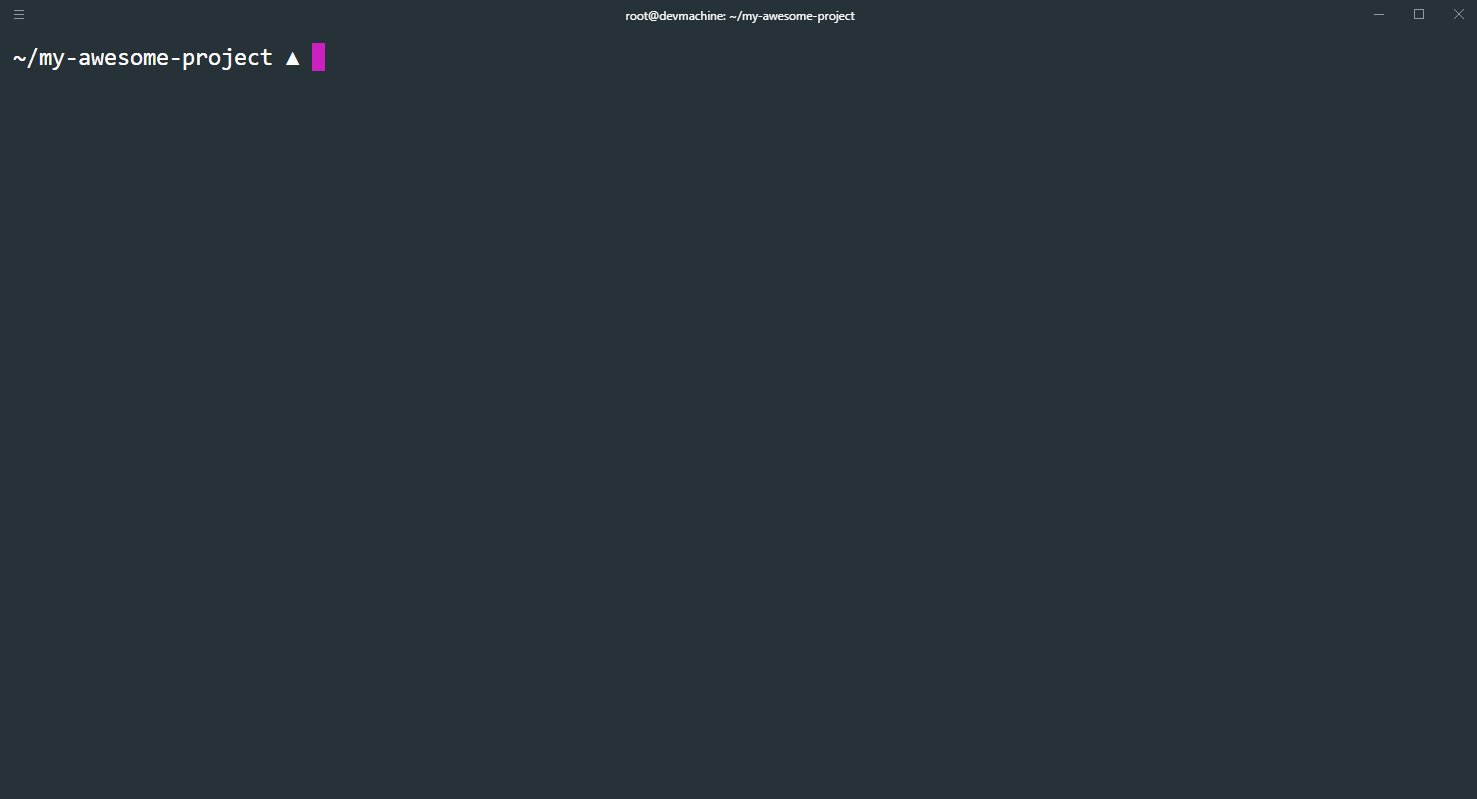Quick Start
What to expect
After this quick start guide, you'll have
- An ExpressJS based REST API written in TypeScript
- The same REST API, but as a serverless endpoint, written in TypeScript
- A re-usable React Component which consumes the REST API and can be published to NPM with just one command
- A React Application which makes use of the React Component
All in under 10 minutes!
That should be a good starting point to develop your own fullstack application.
Installing Cantara
First, install Cantara globally using your favorite package manager.
npm i -g cantara
Make sure that you have at least Node.js 10 installed. It is recommended to use Node.js >= 12
Expect this to take some time, as all development dependencies for backend and frontend development have to be installed.
Once installed, you can access Cantara in the command line using one of those aliases:
cantaractra
Initialize a new project
Now, let's get you a new folder on your computer!
To create a new Cantara project, use the init command.
You can either execute the command directly like this:
ctra init my-awesome-project

This will create a new folder my-awesome-project.
Now, let's navigate to that folder.
cd my-awesome-project
As you will see, 3 new folders and several new files were copied into the directory. Also, a new git repository was initialized.
The init command, if executed with no other parameters, clones the cantara-simple-starter project, which is a simple example project, consisting of an ExpressJS REST API, a serverless API and a React pp.
The functionality of this app is simple: Displaying a random image from Unsplash to the user.

Look at the code to get a better understanding of how the different parts work together.
The Cantara CLI wizard 🧙♀️
When you execute Cantara without parameters, an easy to use wizard will prompt you with all the commands you can currently invoke! ❇️

You can either use the wizard to build the final Cantara command you want to execute, or type it out in your terminal.
Starting the development servers
We can now start developing the server and the React app using the dev command.
First, let's start our ExpressJS REST API in development mode:
ctra dev express-api# OR justctra dev# and select "express-api"
The first time you invoke the dev command, the application's runtime dependencies need to be installed.
Editing the files under node-apps/express-api, will cause the server to automatically restart.
Now, let's start our React App development server!
ctra dev random-image-app
Goto http://localhost:8080 and you should see a nice random image which was pulled from our ExpressJS Server.
Alternatively, you can also start the serverless REST API in development mode. It is the exact same API, just serverless.
ctra dev sls-api
To consume this API instead of the ExpressJS API, make sure to change the port under react-apps/random-image-app/.env.development to 3002! Changing environment variables requires a server restart.
Now, get creative and play a bit around with the different parts of the application, to get a better feeling of how everything works together! 🔮
Further reading
Now you have the basics to start developing your fullstack app. For the next steps, e.g. creating a production build of your app, publishing packages to NPM or writing and executing tests, go the Docs. Here, all of the more advanced topics are covered. Have fun!